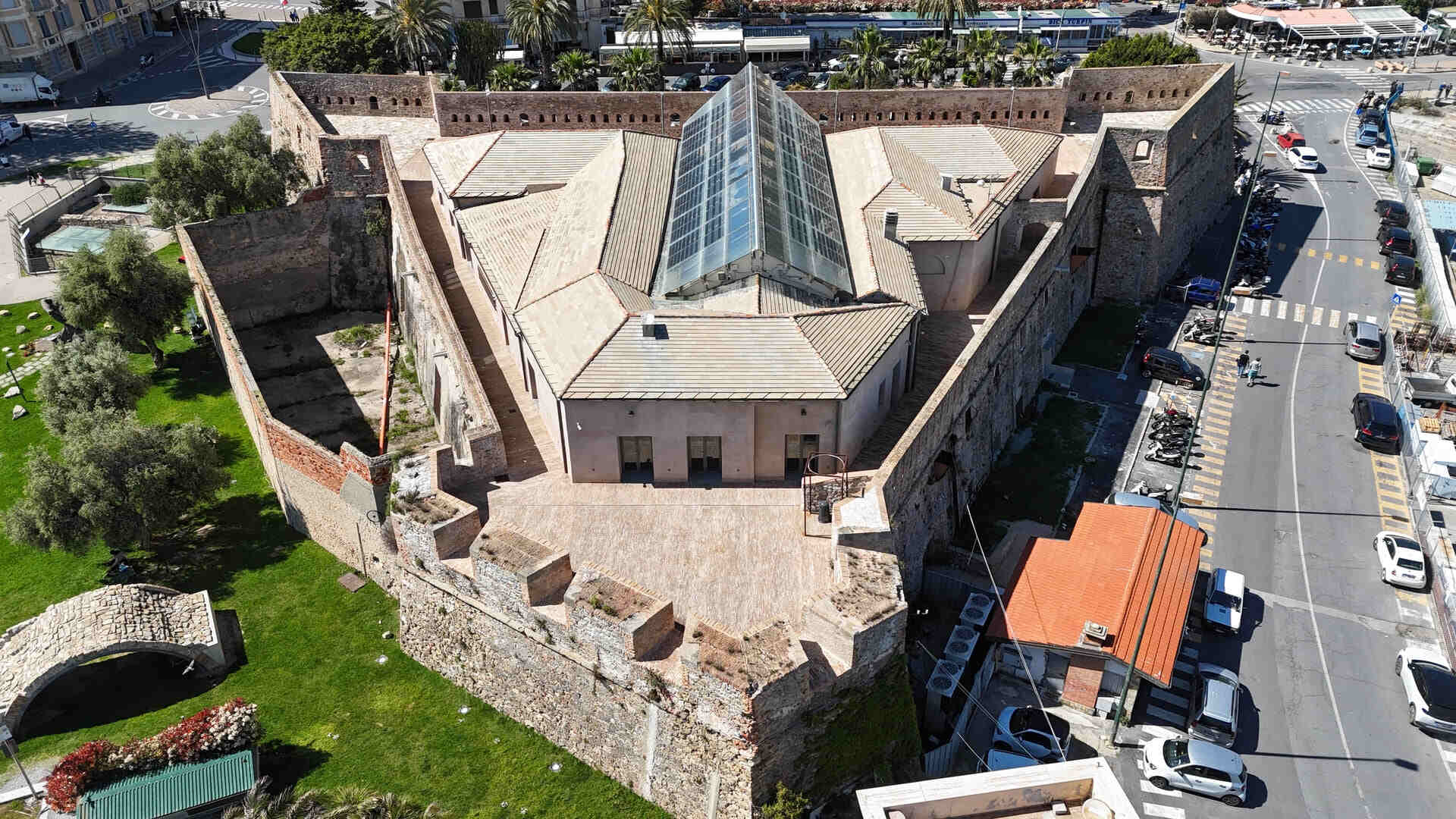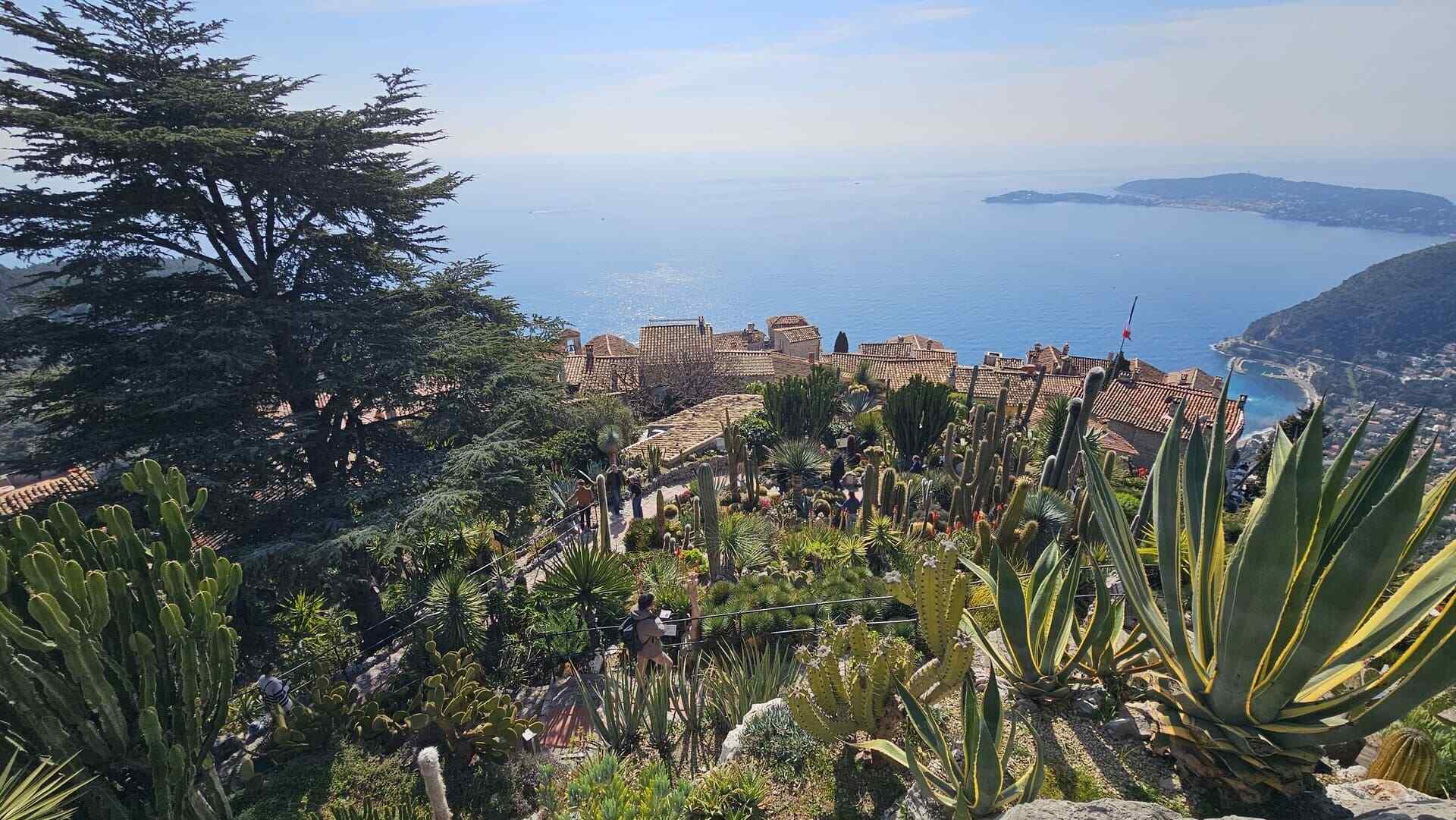
Itineraries and trekking
Hike from Varigotti to Noli along the Pilgrim's Path
August 30, 2022
Among the most beautiful and popular excursions in the area we find the trek between Varigotti and Noli, along the famous Pilgrim's Path. This is an itinerary to be covered on foot, savoring the scents of the Mediterranean scrub at every step and being enchanted by the scenic views of the sea.
You can pause to admire the view from Punta Crena, enter the woods and reach the famous Grotta dei Briganti (otherwise known as Antro dei Falsari), as well as explore the two villages of Noli and Varigotti.
By now you've probably figured it out, when we're not tending to our Agriturismo in Diano Marina and our vegetable garden, we like to explore the wonders of western Liguria.
The Pilgrim's Path: useful information
Ponente Ligure is characterized by white rock cliffs, crystal clear sea, beaches and dense forests-a true paradise for both sportsmen and nature lovers. Among the many paths that cross this area, the most famous is undoubtedly the Sentiero del Pellegrino (Pilgrim's Path), which connects the towns of Noli and Varigotti and can be easily walked in both directions.
The route can be walked all year round, but pay attention to the weather, which for the most part is exposed to sun and weather.
We recommend bringing enough water and a snack, as well as equipping yourself with comfortable clothing and appropriate shoes.
Varigotti to Noli hike: the itinerary
The hike from Varigotti to Noli along the Sentiero del Pellegrino (Pilgrim's Path) is about 6 km, with an elevation gain of 270 meters, which can be covered in approximately a little over 3 hours, varying depending on how many stops you make. The trail is well marked and fairly easy to walk, although some steeper sections are encountered.
The markings to follow are a red X on the way up, and Pilgrim's Trail No. 1 on the way down. If, like us, you want to avoid going back in the dark through the woods, you can always decide to walk the Via Aurelia.
Below you will find directions to walk the hike from Varigotti to Noli, but you can also walk it in the opposite direction.
Towards the little church of San Lorenzo
The hike starts in Varigotti, in Via Strada Vecchia, where you can look for parking and take the path. The first section proceeds on a steep slope, giving from the start a splendid view of the Bay of Saracens.

Proceeding along the trail, follow the signs for the church of San Lorenzo, still well preserved and set in a dominant position on the roadstead below. The church dates back to the 15th century and was built in an area that, around the 6th-7th centuries, housed burials made inside amphorae from the Mediterranean. A fourth-century Roman sarcophagus in white marble, now preserved in the Archaeological Museum of Finale, in Finalborgo, is also traced to the ancient medieval house of worship.
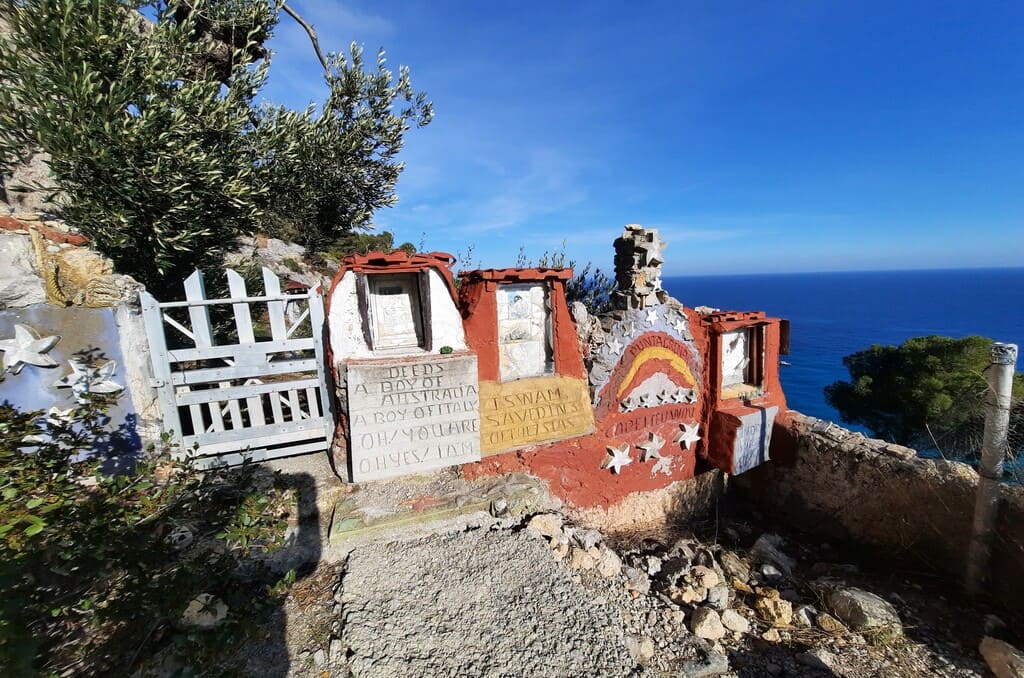
Having visited the church of San Lorenzo, we return back to the main trail and, in a short time, reach the Cerisola Mausoleum.
The mausoleum is dedicated to the compelling story of Giuseppe Cerisola, known as the Carnera because of his physical prowess, and also nicknamed Man of the Seven Seas, indicating his passion for the sea. In his life he rescued many people from stormy seas, was taken prisoner by the British in World War II, and lived for 30 years in Australia, returning to Varigotti, his birthplace, only in old age.
Punta Crena
Past the Cerisola Mausoleum one encounters an engraving in the stone, which reads "When the Going Gets Tough, the Tough Get Going," a phrase from a Billy Ocean song that in Italian can be translated as the famous saying " Quando il gioco si fa duro i duri cominciano a giocare".
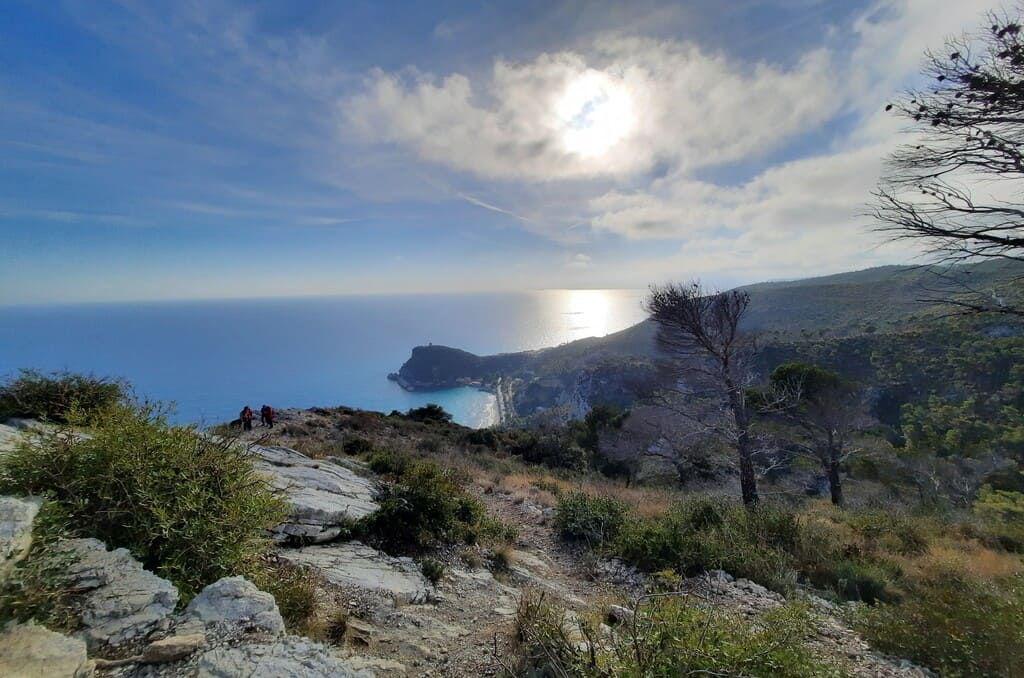
Here the trail gets steeper and steeper: an effort that is definitely worth the effort. After passing the junction of the "Passeggiata Dantesca," or Pilgrim's Path No. 11, you will in fact reach Punta Crena, one of the most beautiful viewpoints in all of Liguria.
The splendid panorama from Punta Crena
The Witches' Tower

We continue in the direction of the Torre delle Streghe, which marks the border between Varigotti and Noli. Besides the wonderful view, the tower is famous for its history. In fact, the construction was erected in 1582 by the inhabitants of Noli to delimit the territorial boundary once and for all. This was because it seems that the inhabitants of Varigotti had a habit of constantly shifting the boundary, expanding their land.
The present name, Torre delle Streghe (Witches' Tower), on the other hand, comes from a more recent habit of the inhabitants of Noli to mock Varigottine women.
From here on, the view of the cliffs disappears, with the trail entering the Mediterranean scrubland with long flat stretches. Crossing the ridge, the view opens up again, with wide glimpses of the Gulf of Noli and, in the distance, the islet of Bergeggi and the Gulf of Savona.
The Grotta dei Falsari
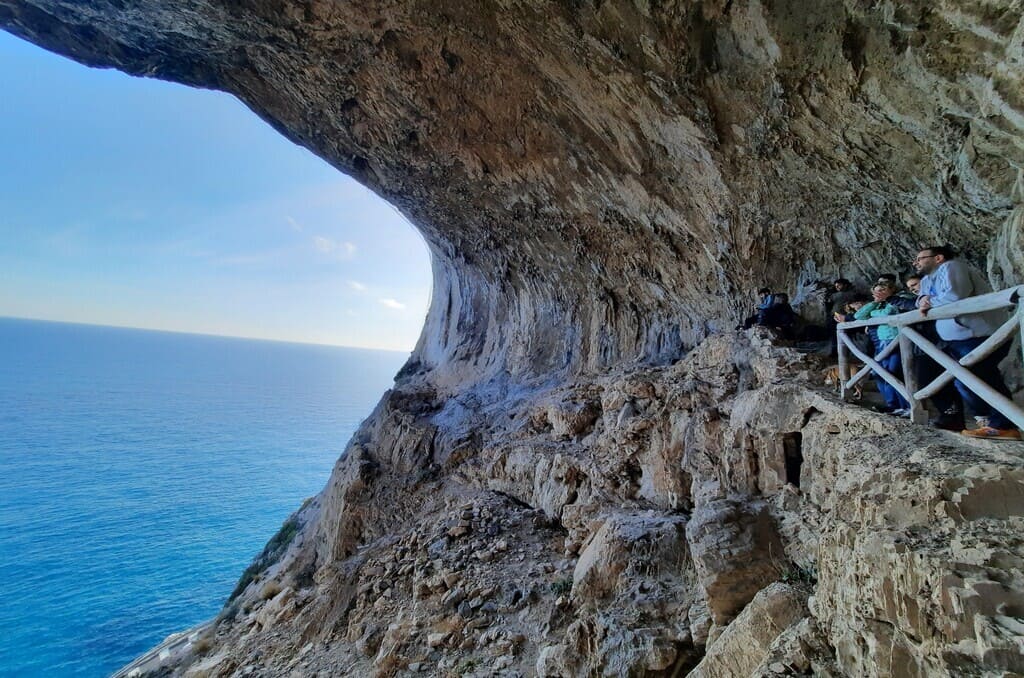
Once over the ridge, we start to descend again until we meet the detour to the famous Grotta dei Briganti, or Antro dei Falsari, a favorite destination of many tourists, photographers and trekking lovers. It is speculated that thieves and smugglers used this place to hide their loot. The path to reach the cave is marked by a red dot marker and is quite steep, with ropes attached to trees to help with the descent. Soon you reach the famous hole in the rock, with its iconic view of the sea, truly breathtaking.
The hermitage of Capo Noli

Admiring the view from the Grotta dei Falsari, one ascends, going to meet the main trail again. Continue the descent toward Noli, encountering the hermitage of Capitano d'Albertis, a building dating from the early 1900s and part of the FAI Places of the Heart. In this place Enrico d'Albertis, a sailor, explorer and man of great culture, retired in old age, cultivating rare essences and forging relationships with the sailors and fishermen of the area. Today, unfortunately, the hermitage appears to be in a state of neglect, though it retains great charm.
The churches of Santa Giulia and Santa Margherita
Following the path down to Noli, one encounters the remains of the churches of Santa Giulia and Santa Margherita. Now all that remains of the building are the perimeter walls and, externally, a small terrace that allows, once again, to enjoy the view overlooking the sea.
Having finally reached Noli, it will be possible to choose to return to Varigotti via the same path, or to proceed along the Via Aurelia. Alternatively, it is possible to return to Varigotti by public transport: you can in fact find bus No. 40 that connects Savona to Andora, reaching Varigotti in a few minutes.
Listen to all podcasts published on our official channels:






